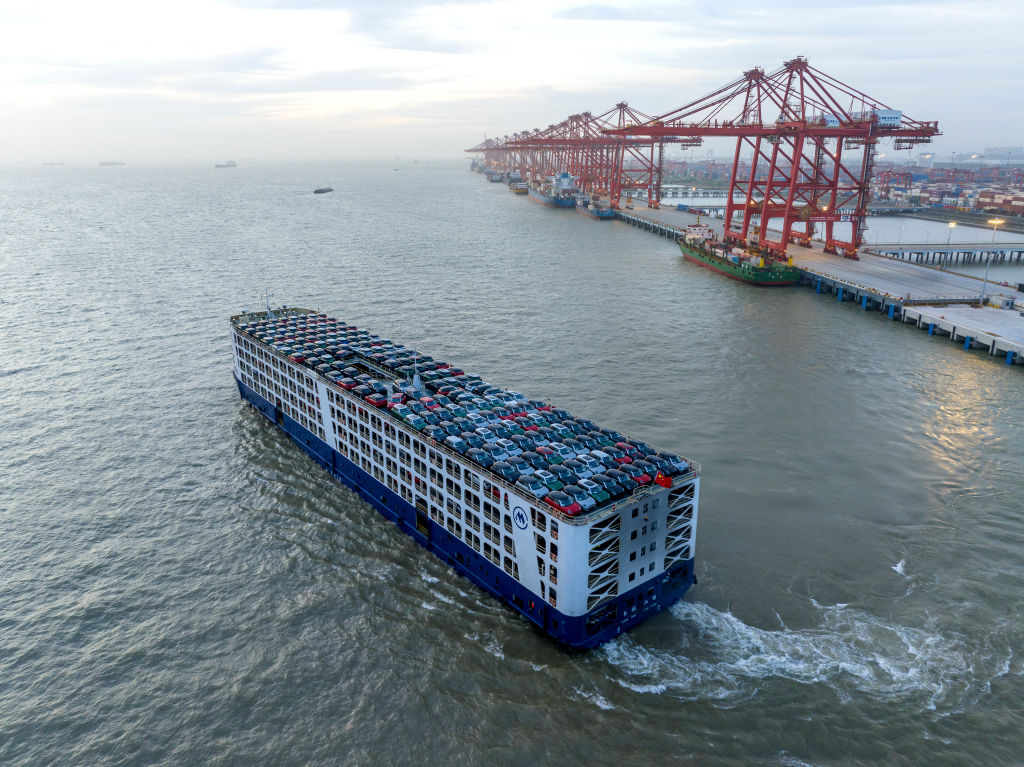The Trump administration shielded on Thursday domestic exporters and vessel owners servicing the Great Lakes, the Caribbean and U.S. territories from port fees to be levied on China-built vessels, aiming to revive U.S. shipbuilding and counter China’s maritime dominance.
The Federal Register notice posted by the U.S. Trade Representative was watered down from a February proposal for fees on China-built ships of up to $1.5 million per port call that sent a chill through the global shipping industry.
Ocean shipping executives feared virtually every carrier could face stacking fees that made U.S. export prices unattractive and foisted annual import costs of $30 billion on American consumers.
“Ships and shipping are vital to American economic security and the free flow of commerce,” U.S. Trade Representative Jamieson Greer said in a statement.
“The Trump administration’s actions will begin to reverse Chinese dominance, address threats to the U.S. supply chain, and send a demand signal for U.S.-built ships.”
Still, the fees on Chinese-built ships add another irritant to swiftly rising trade tension between the world’s two largest economies as President Donald Trump seeks to draw China into talks on his new tariffs of 145% on many of its goods.
The revisions tackle major concerns voiced in a tsunami of opposition from the global maritime industry, including domestic port and vessel operators as well as U.S. shippers of everything from coal and corn to bananas and concrete.
They grant some requested carve-outs, while phasing in fees that reflect the fact U.S. shipbuilders, which turn out about five vessels annually, will need several years to compete with China’s output of more than 1,700 a year.
As a result, companies such as U.S.-based carriers Matson and Seaboard Marine would dodge the fees. Also exempt are empty ships arriving at U.S. ports to load up with exports such as wheat and soybeans.
The agency, which will implement the levies in 180 days, also declined to impose fees based on the percentage of Chinese-built ships in a fleet or on prospective orders of Chinese ships, as originally proposed.
The fees will be applied once each voyage on affected ships a maximum of six times a year.
Executives of global container ship operators, such as MSC and Maersk, which visit multiple ports during each sailing to the United States, warned the fees would quickly pile up.
Instead of a flat individual fee on large vessels, the USTR instead opted to levy fees based on net tonnage or each container unloaded.
From October 14, Chinese-built and owned ships will be charged $50 a net ton, a rate that will increase by $30 a year over the next three years.
That will apply if the fee is higher than an alternative calculation method that charges $120 for each container discharged, rising to $250 after three years.
Chinese-built ships owned by non-Chinese firms will be charged $18 a net ton, with annual fee increases of $5 over the same period.
It was not immediately clear how high the maximum fees would run for large container vessels, but the new rules give non-Chinese shipping companies a clear edge over operators such as China’s COSCO.
The notice comes on the one-year anniversary of the launch of the USTR’s investigation into China’s maritime activities under former President Joe Biden.
In January, the agency concluded that China uses unfair policies and practices to dominate global shipping.
The actions by both the Biden and Trump administrations reflect rare bipartisan consensus on the need to revive U.S. shipbuilding and strengthen naval readiness.
At a May 19 hearing, the USTR will discuss proposed tariffs on ship-to-shore cranes, chassis that carry containers and chassis parts. China dominates the manufacture of port cranes, which the USTR plans to hit with a tariff of 100%.
The Federal Register did not say if the funds raised by the fees and proposed crane and container tariffs would be dedicated to fund a revival of U.S. shipbuilding.
-Reuters














